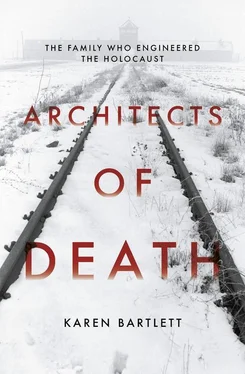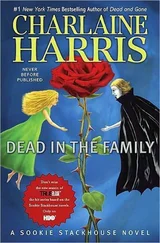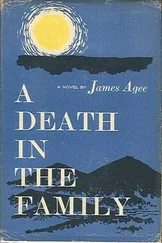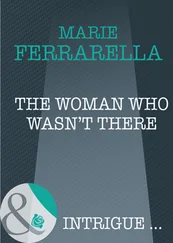While institutional plunder was sanctioned, individual theft by guards was not. Nazis regarded stealing as a major problem – not to mention a deep moral failing. All officially plundered property was supposed to be accounted for in Berlin, but many soldiers posted in the camps were involved in brazen corruption – and made personal fortunes by stealing from ‘Canada’. Later, in 1943, the Nazis launched a full-scale investigation into corruption at the camp and arrested many guards, as well as temporarily removing founding commandant Höss (He was in fact promoted to overseeing all concentration camps from Berlin, but he kept his family housed at Auschwitz, and returned to his role overseeing the camp in May 1944.)
In truth, though, the SS guards at Auschwitz-Birkenau did not need to steal to benefit from their time at the camp. Compared to other soldiers, they had an easy life, and most of the men were aware of their privileges and enjoyed themselves. The SS guards had a good canteen, a cinema and a theatre, plenty of plundered food and drink (including copious amounts of alcohol, rollmop herrings, and sardines to supplement the SS diet of sausage and bread). They also enjoyed frequent day trips which helped take their minds off any nasty activities that might be troubling their consciences. Very few guards who were questioned after the war admitted to being troubled at all by the horrors of Auschwitz: some had brought their families with them, and their children played innocently just outside the camp. Others enjoyed spa breaks at the Solahütte retreat in the nearby mountains. There they entertained women SS guards, and were photographed laughing, conducting tea parties and relaxing in deck chairs on the veranda. A few even went to church.
Twenty-one-year-old Oskar Groening arrived to take up a posting as an SS corporal at Auschwitz in the summer of 1942. On his first day at the camp he witnessed the arrival of a transport of Jewish prisoners; he later claimed that he was upset by what he saw. Up to 90 per cent of these arrivals were sent to be murdered at once in the gas chambers, but some stragglers were left behind. Sick people and lost children
were simply killed with a shot through the head… A child was simply pulled by the leg… then when it cried like a sick chicken, they chucked it against the edge of the lorry. I couldn’t understand why an SS man would take a child and throw its head against the side of a lorry. [70] Rees, op. cit., p. 171.
Groening claimed he protested to his superiors about the sadistic nature of the killing, though not about the murder itself, which he believed was justifiable: ‘The children are not the enemy at the moment. The enemy is the blood in them. The enemy is their growing up to become a Jew who could be dangerous.’ [71] Ibid., p. 172.
Despite initial qualms, Groening freely admitted that he grew to like life at the camp: ‘Auschwitz main camp was like a small town. It had its gossip. It even had a vegetable shop… there was a sports club, of which I was a member. There were dances – all fun and entertainment.’ There were also his friends, his fellow guards, whom he grew fond of: ‘The special situation at Auschwitz led to friendships which, I still say today, I think back on with joy.’ [72] Ibid., p. 206.
Setting your ‘qualms’ to one side was something that all SS officers at Auschwitz became experts at (if they had ever cared to begin with). Even commandant Rudolf Höss, the innovator of so much death and misery, admitted that sometimes he had to have a few stiff drinks, or take a brisk gallop on his horse, to clear his head of the horrors he had witnessed. Occasionally, nothing could completely still the quiet voices, like the Jewish woman ‘under the blossoming fruit trees of the cottage orchard’, who was accompanying a group of unsuspecting children into the gas chambers and leaned over to whisper: ‘How can you bring yourself to kill such beautiful, darling children. Have you no heart at all?’ [73] Ibid., p. 146.
CHAPTER SEVEN
IS THERE ANYONE LEFT TO BURN?
After five years of horror, the Red Army soldiers from the First Ukrainian Front arrived at the gates of Auschwitz-Birkenau on 27 January 1945. There had been intense fighting in the area for weeks, and SS forces had abandoned the camp, and then returned to it, before finally leaving for good. At the Auschwitz main camp 1,000 prisoners remained, while 6,000 people were still living at Birkenau and 600 at Monowitz, the slave-labour camp attached to the IG Farben plant. While German citizens reacted with fear and horror to the news of the Soviet advance, for the victims of the Nazis these men were liberators.
Eva Schloss recalls:
The door to the barrack was flung open and a woman shouted ‘There’s a bear at the gate – a bear!’… Nervously, we made our made down to the entrance and peered at the peculiar sight. Indeed, there was a ‘bear’. A large man covered in bearskins, staring back at us with the same startled expression. Perhaps I should have been more cautious, but all I felt at that moment was unrestrained joy and I ran into his arms and hugged him. [74] Schloss and Bartlett, op. cit., p. 144.
Another Eva who remembers the liberation is ten-year-old Eva Mozes Kor. She echoes the same sentiment:
We ran up to them and they gave us hugs, cookies and chocolates. Being so alone, a hug meant more than anybody could imagine because that provided the human warmth we were starving for. We were not only starved for food but we were starved for human kindness and the Soviet Army did provide some of that. [75] Rees, op. cit., p. 327.
The remaining prisoners had been existing on their own for almost two weeks. Earlier that month, the SS guards had blown up the camp crematoria, torn down electric fences and some guard towers, burned records in the administration building and dispatched thousands of those prisoners deemed well enough to walk on ‘death marches’ to other camps within Austria and Germany. But nothing could hide the appalling crimes. Two months later a Soviet commission produced a report into Nazi activities at Auschwitz, detailing the function of the crematoria, the fact that they were built by Topf and Sons and the method of mass gassing:
The Germans organised the Auschwitz concentration camp into a huge industrial complex for the mass annihilation of human beings. The murder was mostly carried out by means of the toxic substance, Zyklon (B), with the bodies subsequently being incinerated in crematoria or fire pits. Transport trains arrived in Auschwitz from all German-occupied countries – France, Belgium, Holland, Yugoslavia, Poland, Greece and others – bearing people destined for annihilation. Only a small number of healthy people remained in the camp and were used either as manpower in armaments factories or as guinea pigs for various medical experiments, after which they were killed.
During the existence of the Auschwitz camp from 1940 to January 1945, powerful crematoria were in operation there, with a total of fifty-two separate chambers for the incineration of bodies. People were gassed to death in vast numbers in specially equipped, technologically perfect gas chambers that were in the same buildings as the crematoria, but separate from them. Incineration of the many corpses took place both in these perfectly equipped technical installations and in special fires. Here in the Auschwitz concentration camp, the Germans streamlined the processes and achievable scale of human mass murder.
The first crematorium with its six chambers, built in 1941, was soon unable to satisfy the appetite of Hitler’s executioners, so four further crematoria were planned and built – at incredible speed – in the Birkenau part of the camp.
Читать дальше












